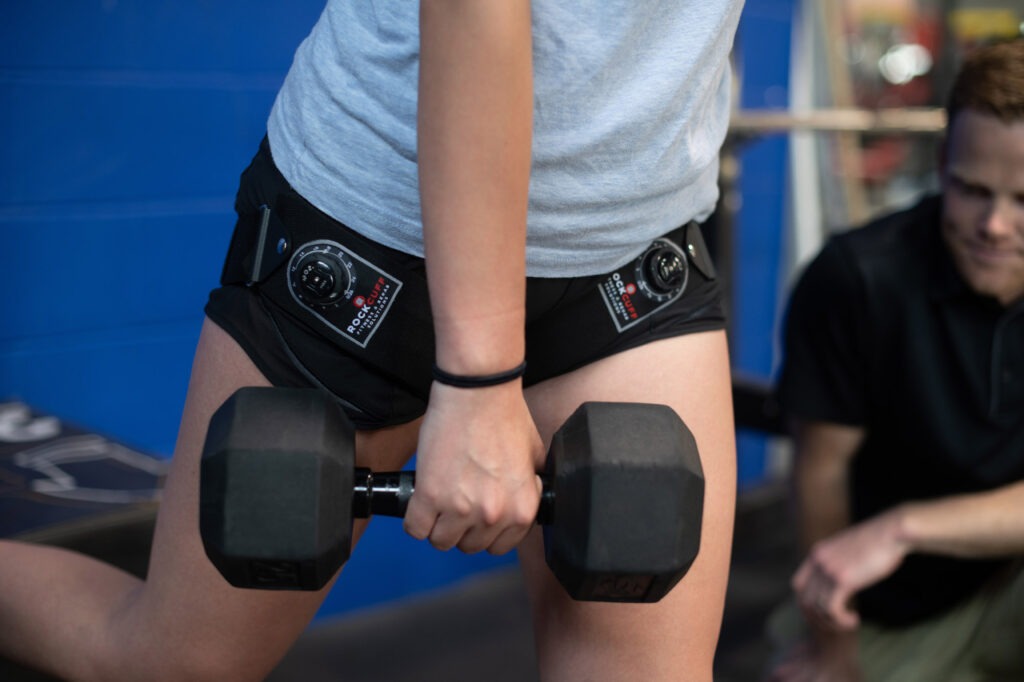Strength Loss Following ACL Surgery
Anterior Cruciate Ligament (ACL) injuries are among the most common lower limb injuries in sports and often result in surgical reconstruction. One of the foremost complications following surgery is muscle atrophy and loss of strength due to joint unloading and limited weight bearing. For example, following arthroscopic knee surgery the decrease in quadriceps muscle volume is as high as 33% and atrophy can occur in as little as two weeks1. This can be very difficult for an ACL patient to overcome as studies have shown that discrepancies in quadricep strength can be as high as 30% on the surgical side six months after surgery2.
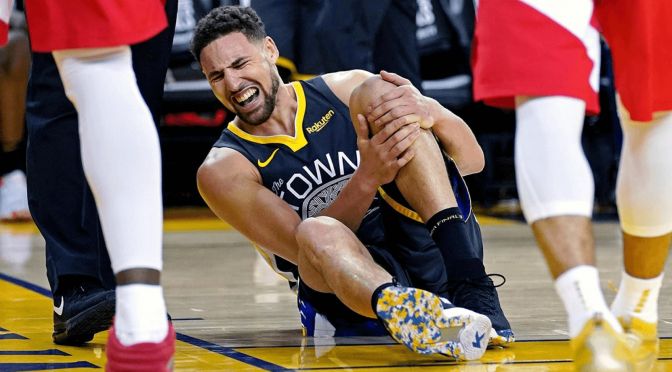
Why is Quadricep Strength Difficult to Regain Following ACL Surgery?
There are many reasons that quadricep strength is difficult to restore following ACL surgery including post-surgical muscle inhibition, fear avoidant behaviours and poor exercise programming. Some of these barriers are easier to overcome than others. For example, post-surgical muscle inhibition can be addressed with the use of neuromuscular electrical stimulation (NMES) units and fear avoidant behaviours can be addressed with education and gradual graded activity under the supervision of the physio. Commonly, where ACL patients and their physio struggle is with basic progressive over load principles to stimulate muscle hypertrophy and strength. This is usually a direct result of fear of applying too much load to the young ACL graft and risking graft elongation or rupture. As a result, ACL patients are often instructed early on to complete low intensity resistance training that does not effectively strengthen the quads and leads to potential further atrophy and an overall delay in the ACL rehab.
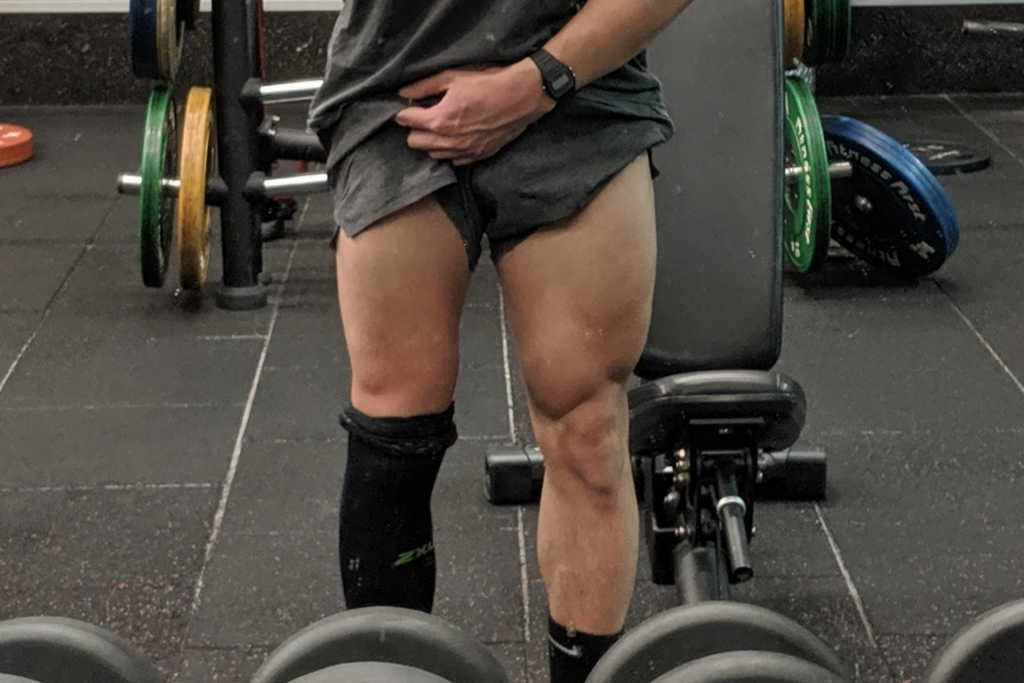
What is Blood Flow Restriction Training?
Blood Flow Restriction (BFR) training has been used in the performance and body building industries since the 1970s but is relatively new to the rehab world. BFR applies external pressure over the proximal extremity to maintain arterial inflow while occluding venous outflow from the distal limb. This creates an anabolic (reduced oxygen) environment in the muscle that makes the body recruit muscle fibres normally reserved for more strenuous exercise. It also stimulates physiological responses such as increased growth hormone and down regulated myostatin release4, both of which lead to muscle growth. In other words, by applying BFR patients can work out at low resistances but still achieve significant strength results. Studies have shown that at 80% limb occlusion pressure (LOP) an individual can train at low resistance (20% RM) and achieve similar strength benefits as if they are training at high resistance (70-80% RM)5.
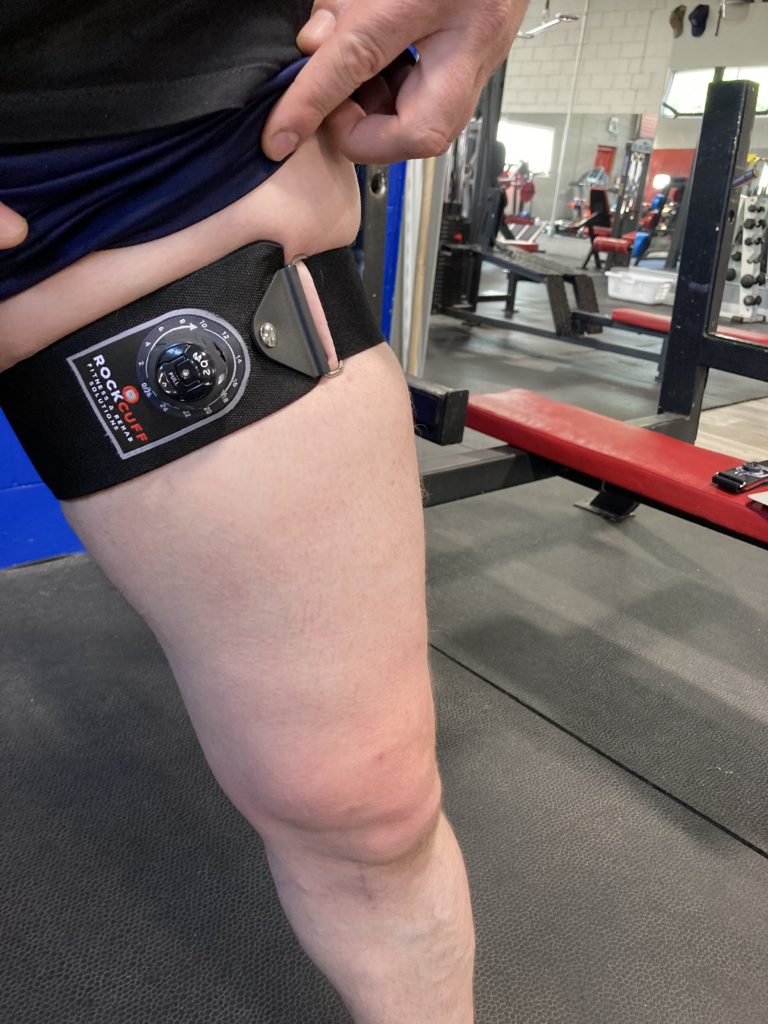
Blood Flow Restriction Training and ACL Rehab
During the initial weeks and months of ACL rehab exercise restrictions are in place to reduce potential harmful stress to the ACL graft that could lead to elongation or re-rupture. This is the time period where the implementation of BFR training in ACL rehab is most critical. During this time frame, with the use of BFR, we can replicate the effects of high resistance training of 70-80% RM at low intensity resistance of <20% RM. Therefore, we can effectively strength train and create hypertrophy in the lower limb during this vulnerability stage so that when we can get our patients back to high resistance training there is no significant lag or asymmetries. To not use BFR in the early stages of ACL rehab is to risk significant delay in the overall ACL rehab recovery.
What does the Research Say?
A recent systematic review in 2020 by Lu et al6 compared the effectiveness of low-load BFR training in conjunction with a standard rehab protocol to a standard rehab protocol alone in patients undergoing ACL reconstruction. What they found was significant benefits in muscle hypertrophy as measured by cross-sectional area; strength, as measured by extensor torque; and subjective outcomes, as measured by subjective knee pain during session, in the BFR group compared to the non-BFR group.
Where can you use Blood Flow Restriction Training with ACL Rehab in Kitchener-Waterloo?
At Modern Physiotherapy and Training we include BFR training with all of our ACL rehab clients, unless directed otherwise by the surgeon. As a result, we tend to hit our quad symmetry and strength goals much sooner than expected which allows our clients to progress through their ACL rehab stages without delay.
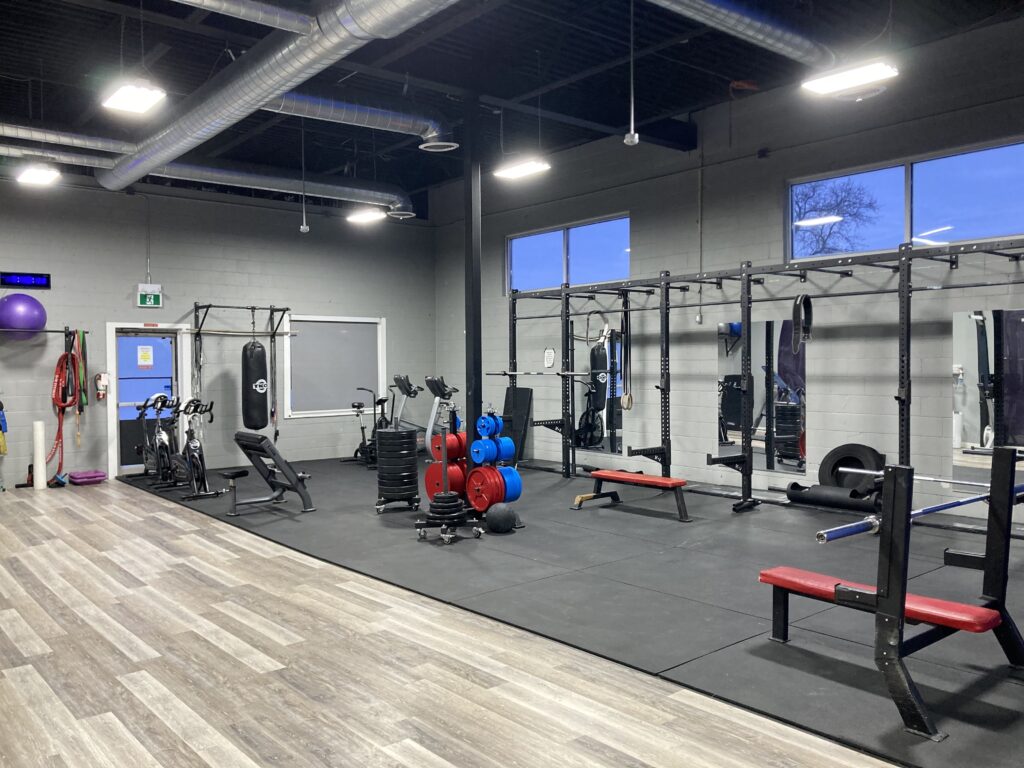
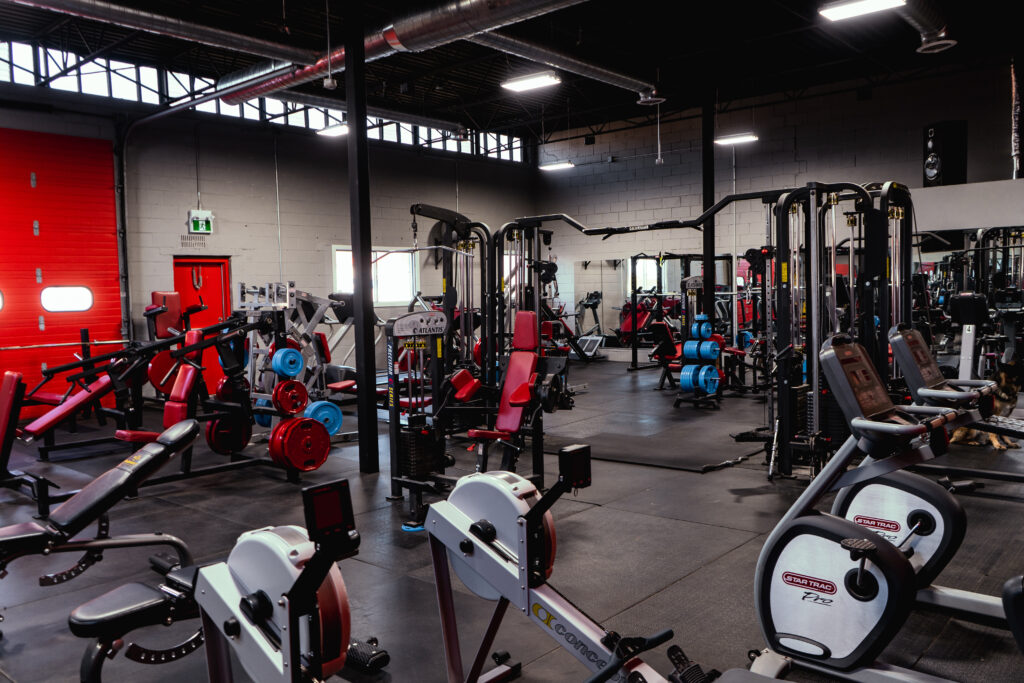
If you are interested in more information on ACL rehab and Blood Flow Restriction training contact the author at blake@modernphysio.ca
Citations
- Wall BT Dirks ML Snijders T, et al. Substantial skeletal muscle loss occurs during only 5 days of disuse. Acta Physiol (Oxf). 2014;210(3):600-611.
- Bryant AL Kelly J Hohmann E. Neuromuscular adaptations and correlates of knee functionality following ACL reconstruction. J Orthop Res. 2008;26(1):126-135.
- Ernst GP Saliba E Diduch DR, et al. Lower-extremity compensations following anterior cruciate ligament reconstruction. Phys Ther. 2000;80(3):251-260.
- Tortora et al. Principles of Anatomy and Physiology: 15th Edition. 2017
- Hughes, L., Paton, B., Rosenblatt, B., Gissane, C., and Patterson, S. D. (2017). Blood flow restriction training in clinical musculoskeletal rehabilitation: a systematic review and meta-analysis. Br. J. Sports Med. 51, 1003–1011.
- Lu Y, Patel BH, Kym C, et al. Perioperative Blood Flow Restriction Rehabilitation in Patients Undergoing ACL Reconstruction: A Systematic Review. Orthopaedic Journal of Sports Medicine. 2020;8(3).

